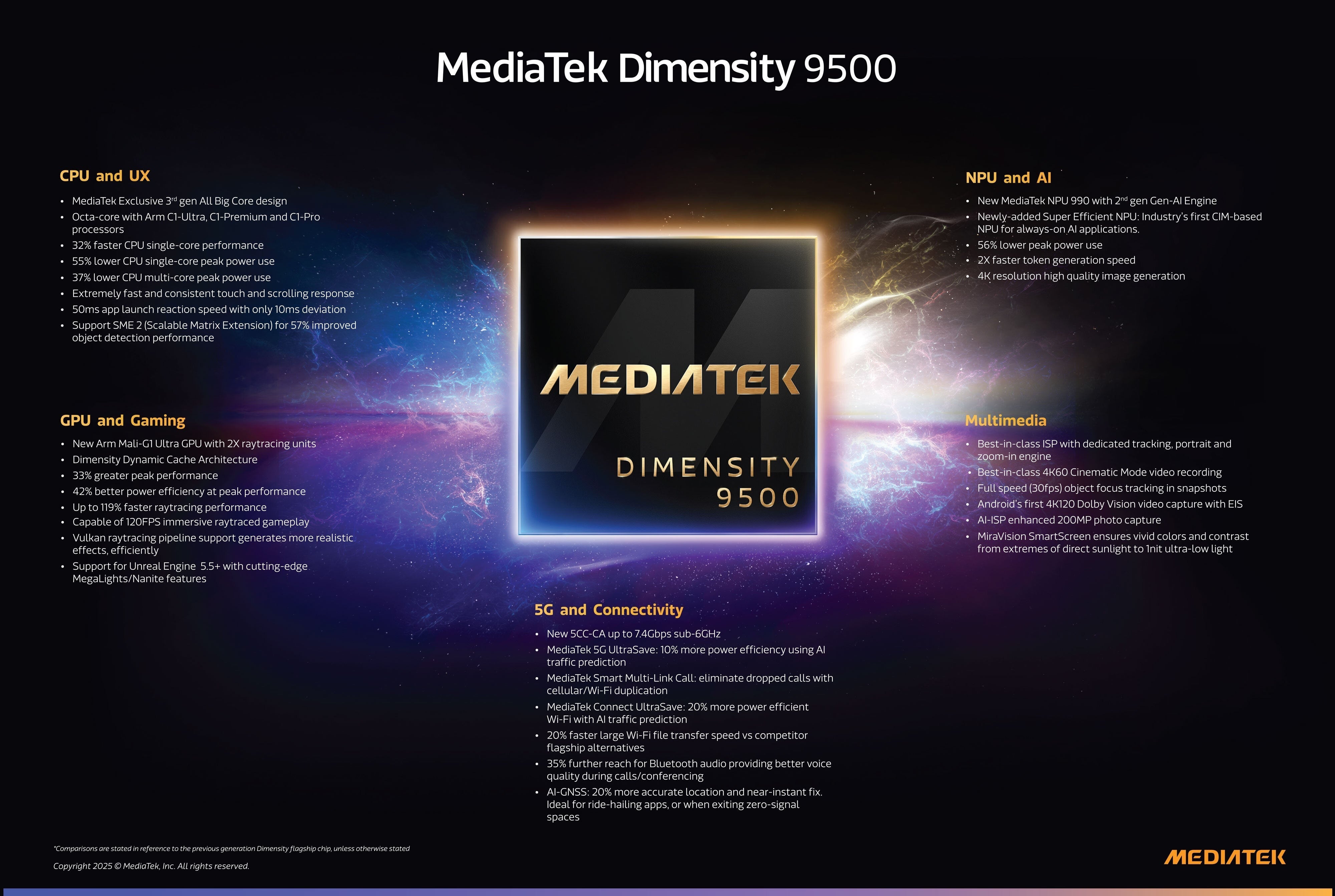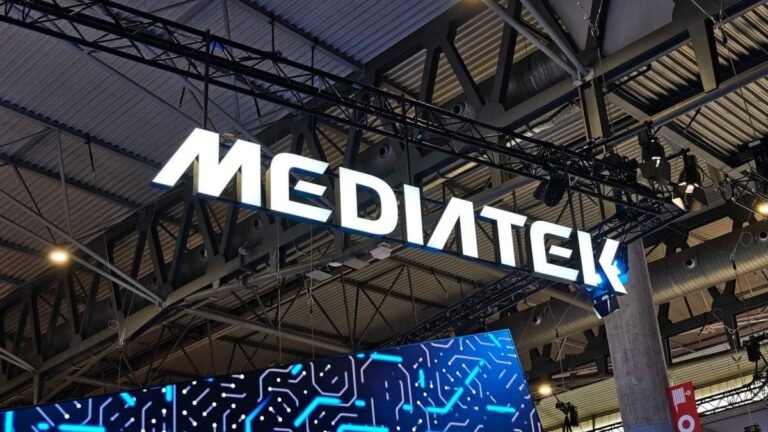That’s not supposed to happen. MediaTek operated as a budget-friendly mid-range solution for years, yet it failed to provide outstanding performance. It was the chip you found in the more affordable Android phones on the market.
Yet here we are in 2025, looking at results that turn that reputation upside down. The Dimensity 9500 is without a doubt the start of MediaTek’s redemption arc, and it just might change how we talk about flagship performance.
The numbers we didn’t expect: Benchmarks and real-world results


The tests we did on the Vivo X300 Pro showed that MediaTek’s Dimensity 9500 can deliver similar performance to that of Apple and Qualcomm’s top processors — that’s the first time this has happened.
On single-core CPU performance, the Dimensity 9500 is still behind Apple’s A19 Pro. But the surprise came in the multi-core performance tests, where the 9500 climbed right up alongside the Snapdragon 8 Elite and Apple’s own A19 Pro, delivering excellent results for multitasking and demanding workloads.
The real breakthrough, though, comes from the GPU. The Dimensity 9500 is an absolute champ in graphics performance, beating both the Snapdragon 8 Elite and Apple’s A19 Pro in peak 3DMark scores and continuing to hold higher frame rates under prolonged use. In comparison to Qualcomm’s chip that throttles gradually and Apple’s that falls sharply after the first loop, the Dimensity 9500 managed to stay cool and consistent — something we’d never have said about MediaTek in the past.
That’s a major leap from just one year ago. The previous Dimensity 9400 (found in the Vivo X200 Pro) was efficient and capable, but it was still far behind the Snapdragon 8 Gen 3 and Apple’s A18 Pro in heavy benchmarks.
Independent real-world testing confirms our finds
The results from our own lab tests are echoed almost perfectly by Techmo’s independent comparison, which placed all five 2025 flagships side by side.
The Dimensity-powered Vivo completed CapCut’s 4K export test in 38 seconds which was significantly faster than the iPhone at 1 minute 36 seconds and the Snapdragon at 1 minute 54 seconds.
The 50-image batch export in Lightroom showed Apple achieving the fastest time of 2 minutes 8 seconds while MediaTek finished at 2 minutes 26 seconds to maintain its position ahead of Qualcomm and Tensor and Exynos.The iPhone operated at 29°C while the Dimensity 9500 reached 34°C which matched the temperatures of the Snapdragon 8 Elite Gen 5 and Tensor G5.
The A19 Pro maintains its top position in peak performance according to Techmo’s expanded gaming benchmarks which run 3DMark Solar Bay Extreme and Wildlife Extreme Stress tests. The MediaTek chip outperforms Snapdragon during the first test loops and produces more stable results throughout the entire test period.
Given that another set of independent tests confirmed what our own data showed, it’s safe to say MediaTek is no longer the underdog — it’s the new power player challenging Qualcomm’s long-held dominance.
How MediaTek did it (for the nerds)


How did Dimensity 9xxx chips go from “good enough” to “dangerously better”?
A lot of it comes down to the chip’s architecture. The Dimensity 9500 is built on TSMC’s N3P node, which is the same advanced 3nm process used in Apple’s A19 Pro. That alone provides a major efficiency boost over the previous Dimensity 9400, but MediaTek didn’t stop there. The company also reworked how the chip handles data internally.
One of the most impactful upgrades is Dynamic Cache Architecture, which allows the CPU, GPU, and NPU to share data in real time instead of routing it through slower cache paths. This significantly reduces latency, especially in demanding tasks like 4K video exports or ray-traced gaming, where multiple processors constantly exchange data.
The all-big-core CPU design operates with Arm’s v9.3 architecture. The core architecture now provides all cores with expanded cache sizes which enhances the performance of both efficiency and performance cores during demanding tasks. As a result, MediaTek achieved higher multi-core performance without a major power penalty — likely the secret behind its strong sustained results in our 3DMark stress test.
The Mali-G1 Ultra GPU working with HyperEngine 3.0 provides 119% enhanced ray-tracing capabilities than its predecessor. That’s why the Vivo X300 Pro felt so smooth during extended gaming sessions.
The new NPU 990 operates at twice the AI performance level while using less than half of the previous power consumption.
So what does this all mean in the grand scheme of things?
It could be that we have reached the so-called chip plateau, where improvements to the performance are smaller, and the playing field has leveled out.
MediaTek catching up was probably inevitable once everyone hit that same technological ceiling. Whatever the reason, it’s good news for us, the users, as stronger competition means better (and hopefully cheaper) products for all of us.
Once we hit 2nm, phone manufacturers will have to look for other ways to improve the performance of their phones. Or, maybe, they will stop chasing better performance numbers and start optimizing the tech we already have, focusing on the user experience instead.
I’m sure about one thing, though — I’ll definitely be keeping a closer eye on future Dimensity chipsets, and I probably won’t dismiss them as quickly as I used to.


